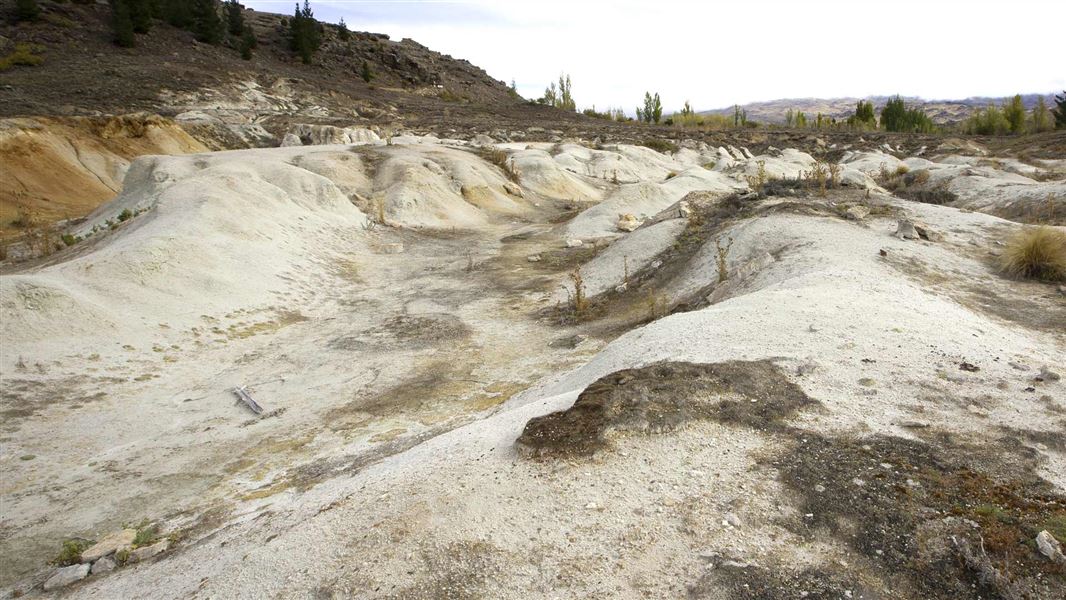Image gallery
Just south of Alexandra, turn off SH8 onto Earnscleugh Road, then into Chapman Road.
Salt pans
The soils of this reserve are highly saline (salt-rich), commonly known as salt pans. Salt pans used to cover more than 40,000 ha within the Central Otago region. Today there are fewer than 100 ha remaining. This habitat destruction is caused by a combination of factors including irrigation, mining and erosion.
Rare flora and fauna
Chapman Road Scientific Reserve to home to small and beautiful rare plants, and two rare and threatened species of native moths.
DOC's work
Due to the loss of habitat and competition from exotic weed species, most of the plants and moths in the reserve are endangered. DOC monitors these species and completes annual weed and rabbit control to protect these native species.
Natural and human history
A hundred million years ago Otago had large mountains, formed by the Manuherikia faults that uplifted schist bedrock where gold was formed. Those mountains have since eroded away. Evidence of gold mining in the 1860s can still be seen at this site today.
Wānaka Tititea/Mount Aspiring National Park
Visitor Centre
| Phone: | +64 3 443 7660 |
| Email: | wanakavc@doc.govt.nz |
| Address: | 1 Ballantyne Road Wānaka 9305 |
| Hours: | Visitor centre hours and services |
